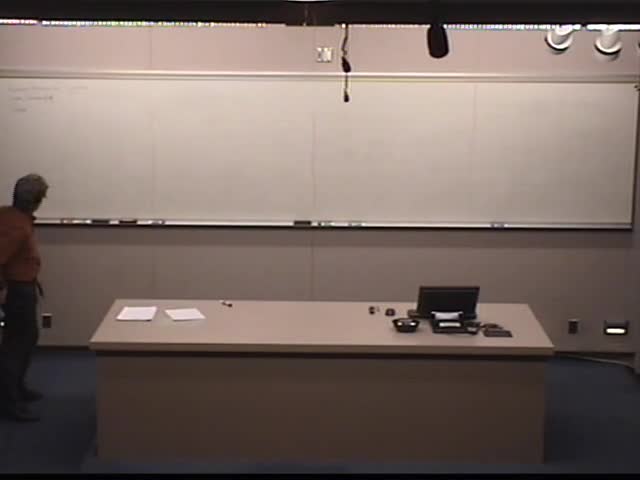Abstract
The theory of dynamical systems is a well established theory dealing with the qualitative properties of diff
erence equations or diff
erential equations. Objectives of this theory are for instance the stability of
equilibrium points, bifurcations, existence of invariant manifolds, attractors, etc. The theory of random
dynamical systems studies the qualitative behavior of systems under the influence of noise. A noise is an
ergodic stochastic process. The main topic of these three lectures is to introduce the foundation of this theory.
In particular we give a mathematical description of several types of noise. In addition, we present the defi
nition
of a random dynamical system as a measurable cocycle. Then we give several examples of random (partial)
diff
erential equations and stochastic (partial) di
fferential equations generating a random dynamical system.
Lecture 1: Basics on random dynamical systems.
We introduce a metric dynamical system as a model of a noise. As an example for such a metric dynamical
system we introduce the (fractional) Brownian motion. We then are able to introduce the ergodic theorem and
tempered random variables. Based on these foundations we can de
fine a random dynamical system. We then
describe how to generate these systems by simple random di
fferential equations. For these systems random
fixed points and describe their bifurcation are studied, [3], [1].
Lecture 2: Partial diff
erential equations and random dynamical systems.
We consider several partial di
fferential equations like 2D Navier-Stokes equations, reaction {di
ffusions equations, wave equations driven by a white or multiplicative noise. To generate a random dynamical system we
transform these equations by a random cohomology into partial differential equations with random coefficients.
These transformed equation then allows us to generate a random dynamical system. We also present some
ideas how to defi
ne random dynamical system for stochastic diff
erential equations driven by a fractional Brownian motion where modern techniques of stochastic integration are used. These techniques allow to generate
random dynamical systems for stochastic partial di
fferential equations with general coefficients in front of the
noise, [7], [5], [4].
Lecture 3: Random attractors.
We present the theory of pullback attractors. The existence of pullback attractors is based on two properties:
the existence of a pullback absorbing set or (asymptotical) compactness of the random dynamical systems. We
then explain methods how these properties can be found for particular equations from mathematical physics.
We will also discuss several questions related to the existence of random attractors, [2], [6].
References
[1] L. Arnold. Random dynamical systems. Springer Monographs in Mathematics. Springer-Verlag, Berlin, 1998.
[2] L. Arnold and B. Schmalfuss. Fixed points and attractors for random dynamical systems. In Advances in nonlinear stochastic
mechanics (Trondheim, 1995), volume 47 of Solid Mech. Appl., pages 19{28. Kluwer Acad. Publ., Dordrecht, 1996.
[3] H. Bauer. Probability theory, volume 23 of de Gruyter Studies in Mathematics. Walter de Gruyter & Co., Berlin, 1996.
Translated from the fourth (1991) German edition by Robert B. Burckel and revised by the author.
[4] M. Garrido-Atienza, K. Lu, and B. Schmalfuss. Unstable manifolds for a stochastic partial diff
erential equation driven by a
ractional Brownian. J. Diff
erential Equations, 248(7):1637{1667, 2010.
[5] B. Malowski and Nualart. D. Evolution equations driven by a fractional brownian motion. Journal of Functional Analysis,
202:277305, 2003.
[6] B. Schmalfuss. The random attractor of the stochastic Lorenz system. Z. Angew. Math. Phys., 48(6):951{975, 1997.
[7] B. Schmalfuss. Attractors for the non-autonomous dynamical systems. In International Conference on Di
fferential Equations,
Vol. 1, 2 (Berlin, 1999), pages 684{689. World Sci. Publishing, River Edge, NJ, 2000.
